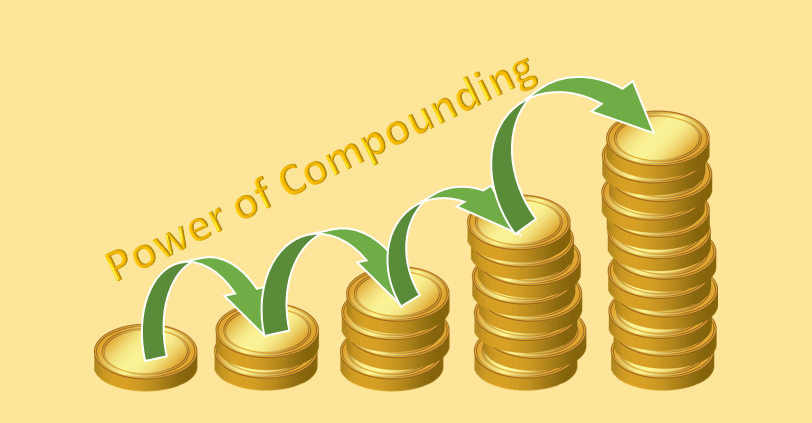“Compound interest is the eighth wonder of the world. He who understands it earns it; he who doesn’t pays it.” This insight from Albert Einstein underscores the transformative power of compounding in wealth accumulation. By reinvesting earnings, even modest investments can grow substantially over time, highlighting the importance of starting early and maintaining consistency. Curious about how to better understand the power of compounding? The quantum-ai.trading bridges the gap between traders and seasoned educational experts to help decode this fascinating concept.
The Essence of Compounding: More Than Just Interest
Defining Compounding and Its Fundamental Principles
Compounding [1] is often called the “magic” of wealth-building, and for good reason. At its heart, it’s the process where your money not only grows on the initial amount you invested but also on the returns generated over time. Think of it as planting a tree. The trunk represents your initial investment, and over the years, it branches out with new growth, creating more branches and leaves. Each new branch adds more volume to your wealth.
This principle isn’t limited to financial growth. It’s like learning a new skill: the more you practice, the faster your progress compounds. In economic terms, compounding works best when paired with patience and time.
Also read: Matt Gaetz Wife Ginger Luckey Gaetz: Political Partner, and Modern Conservative
Differentiating Between Simple and Compound Interest
Understanding the difference between simple and compound interest is crucial. Simple interest grows linearly—it’s calculated solely on the initial investment. For example, if you invest $1,000 at a 5% simple interest rate, you earn $50 annually, no matter how long you keep it invested.
Compound interest [2], on the other hand, calculates returns not just on your initial investment but also on the interest earned previously. Using the same $1,000 at 5% compounded annually, you’d earn $50 in the first year, but the second year calculates interest on $1,050. Over time, this compounding snowballs into significant growth.
The Time Factor: Why Starting Early Amplifies Wealth
Illustrating How Early Investments Benefit From Extended Compounding Periods
The earlier you begin, the longer compounding has to do its job. Starting young is like giving your investments an extra lap in the race for growth. Even small amounts invested in your twenties can outpace larger sums started later in life.
For instance, let’s say Person A invests $5,000 annually from ages 20 to 30 and then stops contributing altogether. Meanwhile, Person B waits until 30 and invests the same $5,000 annually until 60. Surprisingly, Person A’s portfolio often ends up larger at retirement, even though they contributed for only ten years.
Real-Life Examples Demonstrating the Impact of Time on Investment Growth
Let’s bring this to life. If you invest $10,000 at 8% annual return, in 10 years, it grows to approximately $21,589. But over 30 years, the same $10,000 grows to over $100,000. It’s not just about the amount—it’s about the runway you give it.
So, the big question is: When’s the best time to start? The answer is simple—yesterday. But if you missed yesterday, the second-best time is today.
The Snowball Effect: How Earnings Generate More Earnings
Explaining the Process of Reinvesting Returns to Accelerate Growth
Compounding thrives on reinvestment [3]. By reinvesting your returns, you create a self-perpetuating cycle of growth. It’s like rolling a snowball down a hill—it gathers more snow as it moves. This is why people often call compounding a wealth-building snowball.
For example, if you start with $5,000 and earn a 7% annual return, reinvesting those returns means that by the second year, your returns are based on $5,350, not just the original $5,000. Over decades, this process multiplies your wealth significantly.
Visualizing the Exponential Increase in Wealth Through Continuous Reinvestment
The growth curve of compounding isn’t linear—it’s exponential. Imagine the graph starts as a slow, steady climb. Then, somewhere along the line, it shoots upward dramatically. That’s the magic of compounding.
Consider this: A 22-year-old who invests $100 a month at an average return of 8% will have about $349,000 by the time they’re 62. But if they start at 32, their savings grow to only about $149,000. That decade makes all the difference.
Fast Fact:
“Money makes money. And the money that money makes makes money.” – Benjamin Franklin [Source]
Harnessing Compounding Through Consistent Contributions
Strategies for Regular Investments to Maximize Compounding Benefits
Consistency is the backbone of compounding. Making regular contributions ensures your investments steadily grow over time. This approach is like watering a plant consistently—it won’t grow if you neglect it for weeks and then overwater it.
One effective strategy is automating your savings. Set up a direct deposit to your investment account monthly, even if it’s a small amount. Automation removes the temptation to skip contributions.
Also read: Kelly Loeffler Net Worth & Influence in 2024: Politics, Business, and Power
The Role of Disciplined Saving Habits in Wealth Accumulation
Discipline doesn’t mean sacrificing everything you enjoy. It’s about prioritizing your future. Consider skipping one expensive coffee a week. At $5 each, that’s $20 a month. Invested at a 7% annual return, that small change could grow to $24,000 over 30 years.
Remember, consistency beats occasional bursts of effort. A steady flow of contributions fuels compounding, even if you’re not investing massive sums.
The Role of Interest Rates: Small Percentages, Big Differences
Analyzing How Varying Interest Rates Influence the Compounding Process
Interest rates act as the accelerator for compounding. A higher rate makes your money grow faster, but even modest rates work wonders with enough time. For example, at a 3% rate, your money doubles in 24 years. At 6%, it doubled in just 12 years.
However, it’s not just about chasing the highest rate. Sometimes, higher returns come with higher risks. Balancing safety and growth is essential for long-term success.
Comparing Scenarios With Different Rates to Highlight Their Long-Term Effects
Let’s compare two scenarios:
- Scenario A: $10,000 invested at 4% for 30 years grows to $32,433.
- Scenario B: $10,000 invested at 8% for 30 years grows to $100,626.
The difference is staggering, even though both rates seem modest initially. That’s why monitoring your portfolio and adjusting strategies is key. Your money is like a team—coach it well, and it will perform.
When exploring investments, consider consulting a financial expert. Their guidance can help you choose the best options based on your goals and risk tolerance.
Conclusion
In essence, compounding serves as a powerful ally in building wealth. By understanding its principles and committing to regular investments, one can harness this financial phenomenon to achieve long-term financial goals. Remember, the journey to financial prosperity is a marathon, not a sprint.






